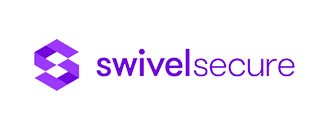Communicative English
Positioning you as an industry influencer is at the heart of what we do. We work with you to create and develop human resource that are fuelled by fluency in English language and enhance them in self confidence, personality improvement that help them reach a new zenith of achievements.
'Excellent Communication Skills': What Does It Really Mean?
Having good communication skills is all about being able to convey information to people clearly and simply, in a way that means things are understood and get done. It’s about transmitting and receiving messages clearly, and being able to read your audience. It means you can do things like give and understand instructions, learn new things, make requests, ask questions and convey information with ease.
It also means that you can adapt yourself to new and different situations, read the behaviour of other people, compromise to reach agreement, have difficult conversations with ease, and avoid and resolve conflict. In fact, a large part of good communication is about being empathic, so you can understand how others will interpret your words and behaviour. And don’t forget that communication is a two-way street, so being a good listener is vital.

Why Communicative English Is So Important for students..??
In the present global scenario, the importance of communicative English is beyond any doubt.
- English is one of the most spoken language in the world, It is estimated that the number of people in the world that use in English to communicate on a regular basis is 2 billion!
- English is the dominant business language and it has become almost a necessity for people to speak English if they are to enter a global workforce. Cross-border business communication is most often conducted in English. Its importance in the global market place therefore cannot be understated, learning English really can change your life.
- Many of the world’s top films, books and music are published and produced in English. Therefore by learning English you will have access to a great wealth of entertainment and will be able to have a greater cultural understanding.
- Most of the content produced on the internet (50%) is in English. So knowing English will allow you access to an incredible amount of information which may not be otherwise available!
- English is commonly used as a medium for the communication of information and news. Three quarters of all tele messages and e maisl are sent in English. Eighty percent of computer data are processed and stored in English
- More than half of the newspapers published in the world, are published in English. English is a major language of international business, diplomacy, and science and the professions
People who speak English have a certain status in society. Now standard English is taught in schools in many countries of the world because it is necessary for careers. So being proficient in communicative English is a must.
What Is Pace Pinnacle Education’ Communicative Method Of Teaching English?
It has been noticed that the goal of the most of the methods is to make the students able to communicate in the target language. It had been observed that students were able to write and read the sentences in target language correctly. But when it came to communicate in the target language, they failed to do so. It made clear to the observer that to make the students able to communicate in the target language, it required more than mastering only the linguistic structures. It had been accepted by the educators that to be able to communicate in the target language, communicative competence is required with linguistic competence.
The communicative approach is based on the idea that learning language successfully comes through having to communicate real meaning. When learners are involved in real communication, their natural strategies for language acquisition will be used, and this will allow them to learn to use the language.
Example
Practising question forms by asking learners to find out personal information about their colleagues is an example of the communicative approach, as it involves meaningful communication.

In the classroom
Classroom activities guided by the communicative approach are characterised by trying to produce meaningful and real communication, at all levels. As a result there may be more emphasis on skills than systems, lessons are more learner-centred, and there may be use of authentic materials
Pace Pinnacle Education’ Communicative English is an approach to teach English language which emphasizes on communicative competence. It also emphasizes on interaction as a means to teach language.
- It aims to make learners to attain communicative competence so the learners can use language accurately and appropriately.
- The major focus while using Pace Pinnacle Education approach is on the learners. The teacher is just the facilitator. The teacher is a person who manages the environment and helps the learners to become autonomous.
- The syllabus emphasizes the functional use of language. The syllabus is relying on the authentic materials. The tasks which are assigned to the learners have purposes and meanings.
- Communicative activities enable the learners to attain communicative objectives of the curriculum, engage learners in communication, and require the use of such communicative processes as information sharing, negotiation of meaning, and interaction
How do we address the need ?
- Focuses on language as a medium of communication - social purpose
- Interaction in the target language in a communicative way for meaningful activities ( emphasis is meaning rather than form )
- Target language - used as a normal medium for classroom management and instruction – naturalistic acquisition
- Take into account needs of different pupils
- Errors are considered as a natural part of learning language
- Learners should be able to go to foreign country – survive in a variety of everybody situations
- Classroom should provide opportunities for rehearsal of real-life situations and provide opportunity for real communication.

Core Assumptions Of Our CE Program….!
- Second language learning is facilitated when learners are engaged in interaction and meaningful communication
- Effective classroom learning tasks and exercises provide opportunities for students to negotiate meaning, expand their language resources, notice how language is used, and take part in meaningful intrapersonal exchange
- Meaningful communication results from students processing content that is relevant, purposeful, interesting and engaging
- Communication is a holistic process that often calls upon the use of several language skills or modalities
- Language learning is facilitated both by activities that involve inductive or discovery learning of underlying rules of language use and organization, as well as by those involving language analysis and reflection
- Language learning is a gradual process that involves creative use of language and trial and error. Although errors are a normal product of learning the ultimate goal of learning is to be able to use the new language both accurately and fluently
- Learners develop their own routes to language learning, progress at different rates, and have different needs and motivations for language learning
- Successful language learning involves the use of effective learning and communication strategies
- The role of the teacher in the language classroom is that of a facilitator, who creates a classroom climate conducive to language learning and provides opportunities for students to use and practice the language and to reflect on language use and language learning








